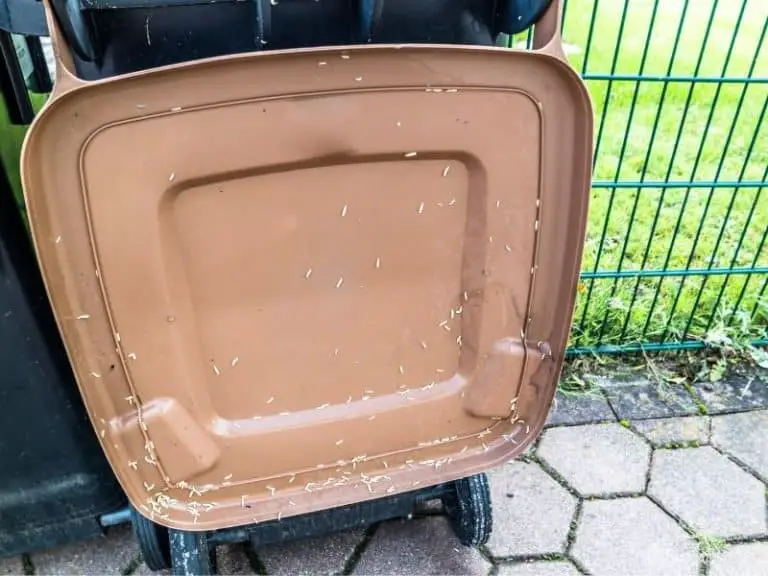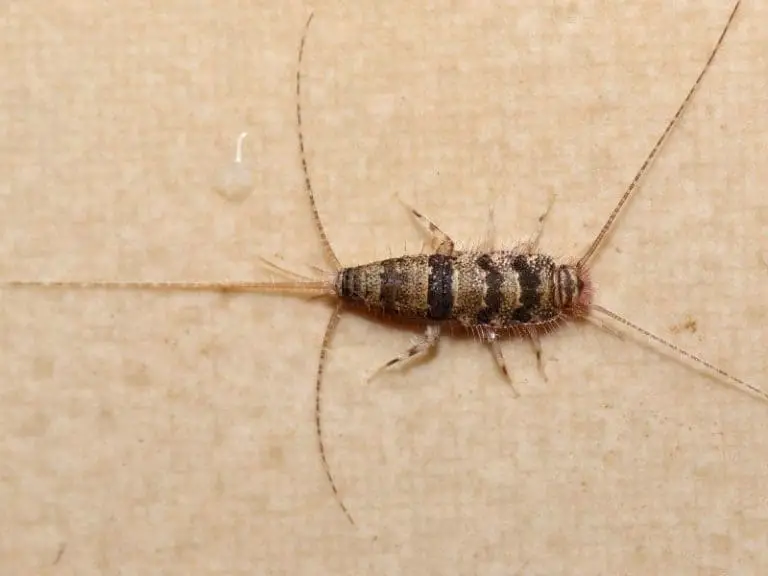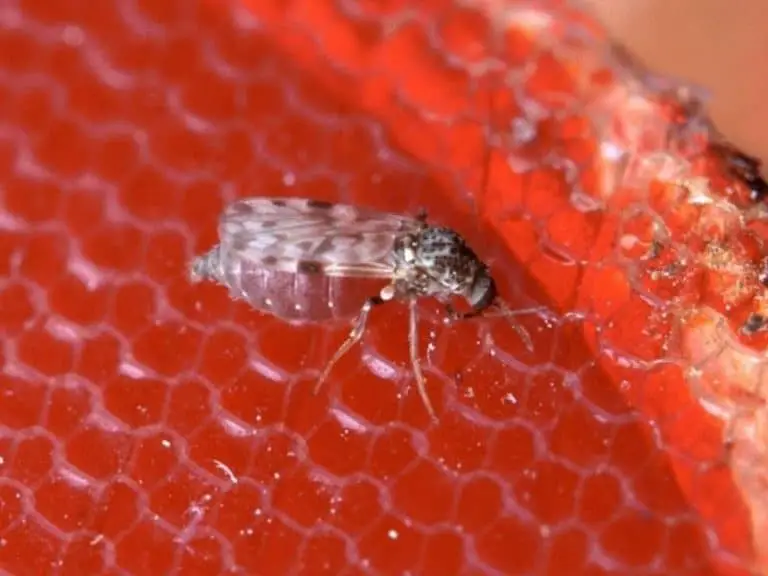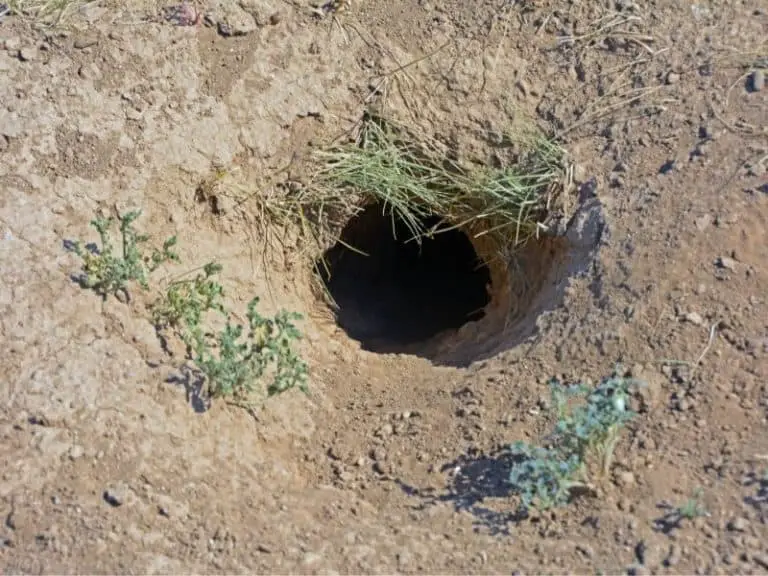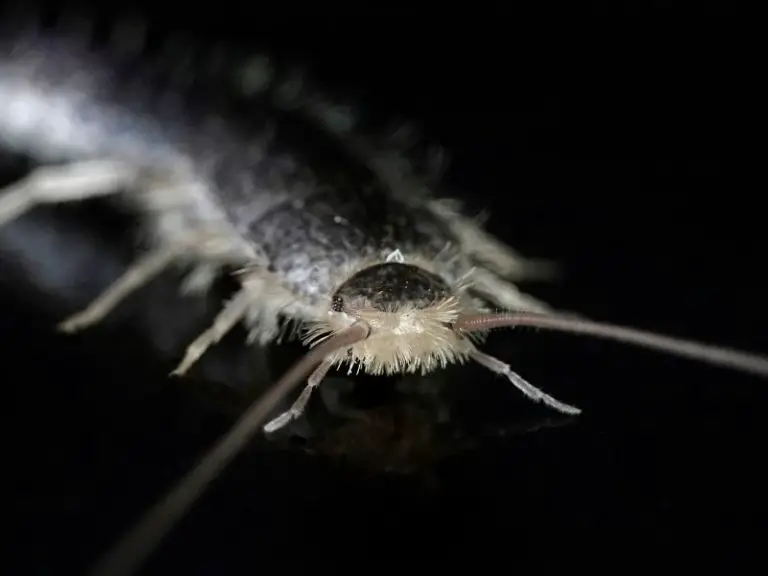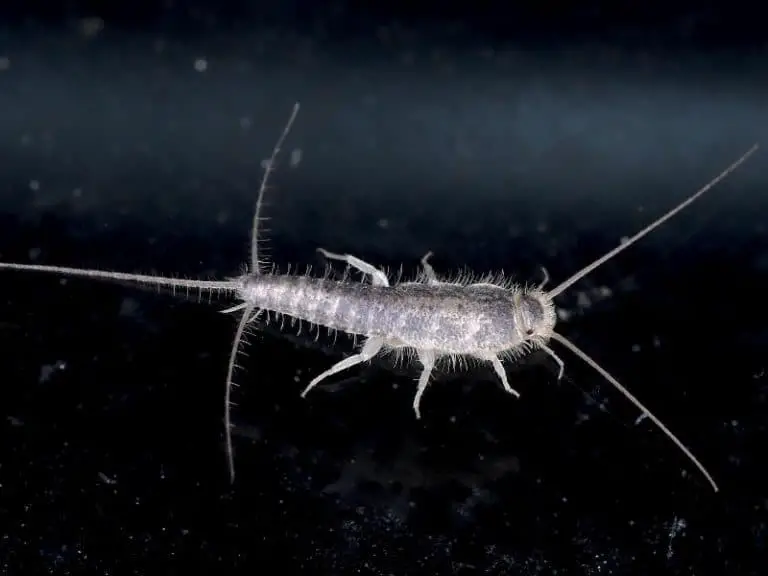What Do No See Ums Look Like?
Spring signals the arrival of lots of no see ums, as well as sand flies and midges, and you may wonder what no see ums and these other insects look like and how you can differentiate them from one another.
They are tiny mosquito-like insect pests that swarm around people and bite and annoy them, especially in places that are at or near beaches or marshes.
They are also called blind mosquitoes due to their behavior of buzzing around you in the same manner as mosquitoes do, although mosquitoes bite more. No see ums are midges that bite and leave you with itching welts that drive you crazy and make you want to seek shelter indoors.
So what do no see ums look like, and how can you differentiate them from other insect pests?
No see ums look like very tiny house flies, with adults that measure only 0.03 inches in total length. Adult no see ums are colored gray and have wings that are covered with small hairs arranged in patterns. Their larvae resemble small, white worms. Their pupae can be yellow to brown in color.
No see ums are hard to see with your naked eyes, especially if they have not yet fed. No see ums can easily be mistaken specks of lint or dirt.
They are so tiny that they can easily fit within the “O” letter found on the dime coin. Their minuscule size allows them to pass so easily through the normal window and door screens on most houses. If they bite you, you will feel the bite, but you won’t find out right away what it is that is biting you because you cannot easily see them.
Many other insects can casually look the same as no see ums, and we need to differentiate them in order to properly avoid them or treat ourselves and our homes against them.
After all, some small midges, flies, and arthropods do not bite at all. The difference between no see ums, other midges, and other biting insects such as chiggers, gnats, and black flies can be hard to detect, so this is what you will learn in this article.
What are No See Ums Called?
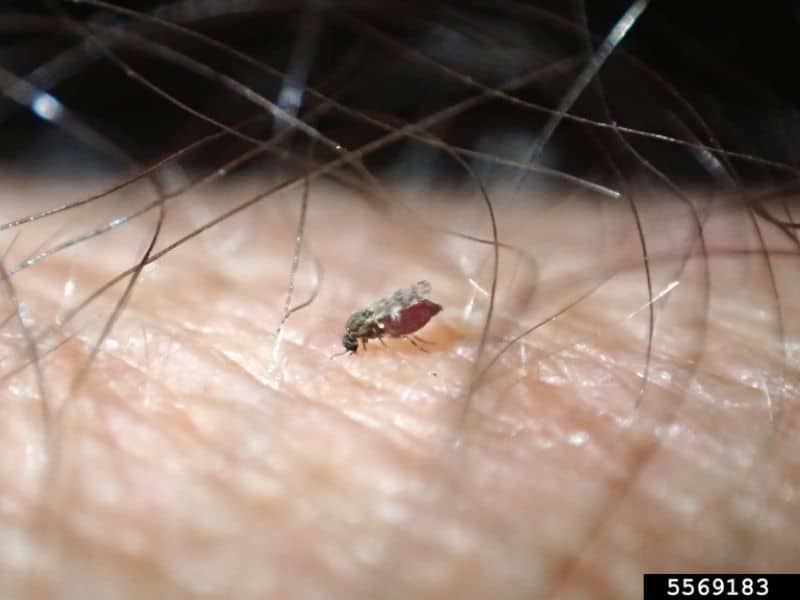
No see ums are called biting gnats, gnats, punkies, biting midges, and sand flies, partially due to geographical variations. Their tiny size makes them hard to spot so that they are hard to identify, and thus come to be referred to by many names that they share with other insects.
Their gray to yellow bodies give them a passing resemblance to mosquitoes, even if they are much smaller in size.
Like mosquitoes, no see ums also suck our blood by puncturing our skin with their mouthparts. This is usually referred to as a “bite,” even though this is not strictly an accurate term.
These bites are painful, and they usually help in transmitting and spreading various diseases, especially in the more tropical regions of the world.
No see ums are very well known by most locals where they occur. This is indicated by their many names, which is a sign that they are often encountered and play a relatively significant role in the lives of humans. They are especially familiar to persons who spend considerable time in the outdoors.
Are Midges and No See Ums the Same Thing?
Midges and no see ums are not necessarily the same. “Midges” is a name applied to insects of various fly families, including no see ums. No see ums have been called biting gnats, sand flies, punkies, gnats, and biting midges. Some of these names are also applied to midges which are not no see ums.
Midges are small flies that belong to many families of Nematoceran Dipteran flies, except for mosquitoes, which are also from the same suborder. Mosquitoes, however, are from the Culicidae family. Some examples of the fly families where the various species of midges belong, which also include the family of no see ums, are enumerated below:
- Family Thaumaleidae – the solitary midges
- Family Scatopsidae – the dung midges
- Family Dixidae – the meniscus midges
- Family Deuterophlebiidae – the mountain midges
- Family Chironomidae – the non-biting midges
- Family Chaoboridae – the phantom midges
- Family Ceratopogonidae – the biting midges or no see ums
- Family Cecidomyiidae – the gall midges
- Family Blephariceridae – the net-winged midges
The Chironomidae, or the –non-biting midges, are also called muffleheads, lake flies, or muckleheads particularly in the region of the Great Lakes in North America.
Meanwhile, the Ceratopogonidae are flies which are also known as biting midges, punkies, and no see ums in the North American region, while in Australia, they are known as sandflies.
The insect group which is commonly called midges comprises a large and diverse number of insects that have equally diverse roles in the environment. They also have a large geographical range. Midges of varying species can be found on virtually all land areas that are not frigid or permanently arid desert zones.
Particular groups of midges are vectors or transmitters of important human and animal diseases.
These include many of the midge species in the Phlebotominae subfamily of Psychodidae, a family of sand flies that are also sometimes called midges. The black flies in the Family Simuliidae are also vectors of diseases.
Other midge species are important prey items of insectivorous swallows and frogs. Some midges are important detritivores, animals that subsist on dead organic materials, especially the detritus of plants. They are thus important parts of many nutrient cycles and ecological processes in nature.
Different midge species have greatly varying habits. Members of the same family usually have identical or similar ecological functions.
Although they are from a different family, mosquitoes look superficially similar to midges. Chironomid midge species are harmless, and they have small mouthparts which do not elongate into structures for piercing, which are needed for feeding on blood.
These flies lack body and wing scales, and their wing vein pattern is different from mosquitoes. Male chironomid antennae have a feathered configuration.
These midges are commonly seen around streams and ponds in the late afternoon up to the evening, exhibiting a swarming behavior that causes humming sounds. Midges can breed in water, on manure, and under tree barks.
Are No See Ums Gnats?
No see ums are not gnats, although they are both under the dipterid fly suborder of Nematocera, especially under the families Sciaridae, Anisopodidae, and Mycetophilidae. The term “gnat” is not strictly technical or phylogenetic; no scientific consensus exists regarding what constitutes a gnat.
Many entomologists only consider gnats to be the non-biting species in the category. Some universities and the Smithsonian Institution describe “eye gnats” as non-biting fly species that do not grow larger than salt grains, which are attracted to the eye fluid secretions.
The fly families that are generally called gnats by some classifications include the following:
- Anisopodidae – the wood gnats and window-gnats
- Cecidomyiidae – the gall gnats
- Keroplatidae – the predatory species of fungus gnats
- Lygistorrhinidae – the long beaked fungus gnats
- Mycetophilidae – the fungus gnats
- Sciaridae – the dark winged fungus gnats
Of course, the common names that indicate these families as gnats are, as previously mentioned, not strictly technical. In this regard, other Nematoceran non-mosquito dipterid fly families can also be known as gnats by one group of scientists or another.
The same goes for no see ums, and because of this, some classifications may call certain species of these flies as both no see ums and gnats.
Generally, gnats have biting as well as non-biting species. These flies usually congregate in large numbers known as “clouds.” No see ums, however, are generally considered to be biting midge species.
You can also sometimes differentiate gnats from no see ums as well as mosquitoes by the differences in their bites.
The differences lie in the duration of the bites; the time that a bite mark appears since the actual bite; and the appearance of the bite site. From these criteria, you can differentiate the bites of gnats, no see ums, and mosquitoes.
Gnat and mosquito bites usually appear very similar. They are itchy, inflamed, red bumps. The bite of a gnat starts as a tiny red bite that looks like the bite of a bedbug. It can also quickly inflame or develop blisters with fluid.
While mosquitoes inject their mouthparts into the skin, gnats cut and slice the skin using mouth cutters. The welts produced by mosquito bites are usually flat but puffy. By not scratching a mosquito bite, it can quickly disappear within one or two days. In contrast, gnat bites are comparatively more severe and last longer.
Meanwhile, in most instances, no see um bites only appear after one or more days after the actual bite. No see um bites also tend to be more painful compared to mosquito bites, and usually appear in clusters of red dots. In contrast, mosquito bites are usually isolated from one another.
Like gnats, the bites of no see ums are also more severe compared to mosquito bites. With time, their bites develop into enlarged and raised welts that have a diameter of one up to two inches. These tender welts linger on the skin for at least two weeks, sometimes more.
With these differences, you may determine what has bitten you, especially if you haven’t seen the actual culprit.
Are No See Ums Seasonal?
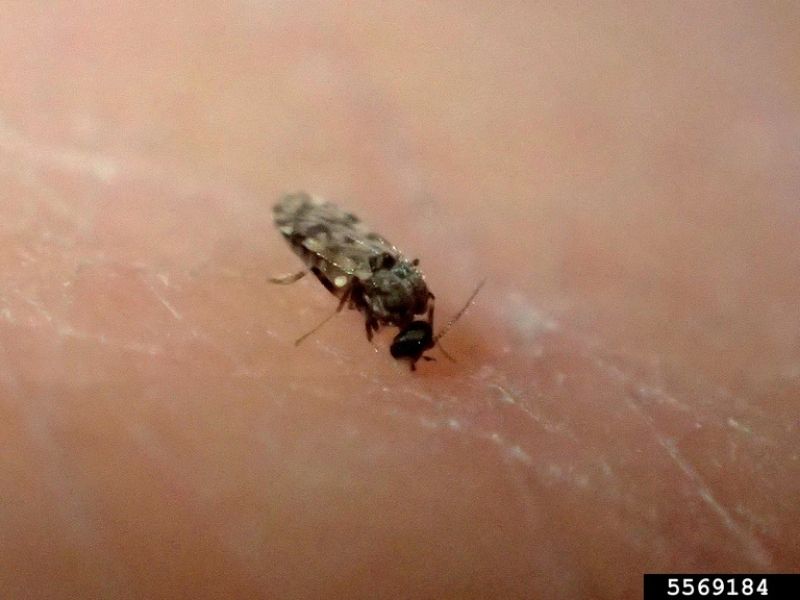
No see ums occur throughout the year with no official season. Nonetheless, even if you can encounter them at any month, you are more likely to be bitten in the warmer months and when the humidity is higher, as these are the conditions that are more conducive to their activity and reproduction.
Are No See Ums the Same as Black Flies?
No see ums are not the same as black flies. Black flies, also known as white socks, turkey gnats, or buffalo gnats, belong to the Simuliidae Family. Nonetheless, black flies are still related to Ceratopogonidae, where no see ums belong. Both black flies and no see ums feed on mammalian blood.
Aside from Ceratopogonidae, black flies are also related to the Thaumaleidae and Chironomidae families of dipterid flies.
There are more than 2,200 recognized black fly species that are divided into the subfamilies of Parasimuliinae, with one genus having four species, and Simuliinae, which account for the rest. More than 1,800 of black fly species are in the Simulium genus.
Black flies also feed on human blood as well as the blood of other mammals, including, poultry, other livestock, and wildlife. Males only mainly feed on plant nectar. In this regard, they are similar to the habits of no see ums.
Black flies can be colored gray or black and are usually small, having short antennae and legs. They commonly cause nuisance and annoyance, with many states in the U.S having black fly population suppression programs in place.
This group of flies causes the transmission of many diseases in the Americas and Africa, such as river blindness, which is caused by a parasitic worm called Onchocerca volvulus.
Are No See Ums the Same as Chiggers?
No see ums are not the same as chiggers, although they are often mistaken as synonymous to each other. Chiggers are not flies; instead, they are a type of biting mite that cannot fly. No see ums, on the other hand, are true flies.
Are No See Ums the Same as Midges?
No see ums are considered midges, but not all types of midges are necessarily no see ums. The loose term “midges” is applied to members of a large number of Nematoceran dipterid fly families, while no see ums usually belong to only one of these families, particularly Ceratopogonidae.
The families of midges have been enumerated in a previous section above.
Are No See Ums the Same as Sand Fleas?
No see ums are not the same as sand fleas. The term “sand fleas” are applied to the sand fly; Tunga penetrans, chigoes, the “true” sand flea; and the Talitridae amphipods. All of them are arthropods, although they come from different orders. The first two are insects while the third are crustaceans.
The first group mentioned above, the sand flies, are true flies. The second, the chigoes, are parasitic fleas that occur in tropical regions like Mexico and South America. These parasites burrow into the feet of people. The third group are members of the Talitridae Family, which are also called beach hoppers, sand hoppers, and beach fleas.
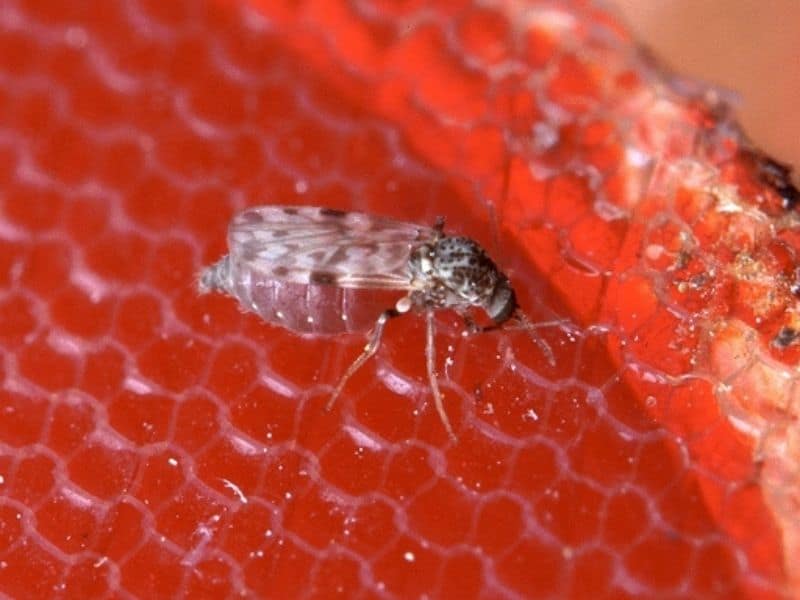
There are terrestrial species of these crustaceans, which are also called landhoppers. Meanwhile, those found on the beach area known as sandhoppers and sandfleas. The latter name is misleading because talitrid amphipods are not biting creatures and do not parasitize humans.
On the beach, you may be bitten by gnats, midges, or other biting creatures. However, the talitrid sand fleas will never bite you.
Despite the common name “sand fleas,” these amphipods are not really fleas at all. As previously mentioned, they are not insects, either. They were probably called this way because these small crustaceans can jump just as fleas do. They are thus hard to catch.
These sand fleas are also quite small, whose length measures a mere ¼ inch to 1 inch. Sand fleas also vary in coloration, which can include brown, greenish, and gray. They have thick, long antennae and many pairs of legs. They also have two appendages that are forked and which protrude from their backs.
Sand fleas, as can be expected from their name, occur in the sand. Specifically, they occur in sandy beaches, particularly near the water’s high tide mark. They are buried in sand during the day and become active at night during which time they forage for their food.
In the US, a species of sand flea crustaceans commonly called Atlantic sand hopper can reach a length of one inch. The species found along the Atlantic coastline is the species Orchestia gammarellus, which originally came from Europe.
Other sand flea species are found along the area of the Gulf coastline. These species include the western Gulf sandhopper and the common Gulf sandhopper.
A sand flea species along the beaches of Santa Barbara is important in removing kelp. The Pale beach hopper, Megalorchestia californiana, can be found in the Northwest Pacific region.
Sand fleas are not a nuisance to people. Some terrestrial amphipods known as land shrimps can cause a nuisance, but they are a completely different group from sand fleas.
The latter is not a problem or a concern for people. They only stay in sandy beach areas and are only active during nighttime, when there are fewer beachgoers.
Thus, you may not even encounter them if you only go to the beach during the day, except maybe if you like to dig the sand or pick up beach rocks. And even then, they will not bite you. The only similarity of the non-parasitic sand fleas with parasitic fleas is their jumping behavior.
FAQ
Are no see ums found all over Florida?
No see ums are especially abundant and bothersome in Florida’s coastal areas. Unfortunately, this is where most of the population of Florida is located. Florida has a lot of parasitic, biting no see ums, sandflies, and mosquitoes.
What can repel black flies best?
Recommended deterrents for black flies include spearmint, peppermint, and mint essential oils. You can add them to the body lotion that you use, your laundry’s final rinse, and on your own clothing. Avoid applying these essential oils directly on the skin as they may cause rashes and untoward reactions.
This article is part of What Are No See Ums Attracted To and What Repels Them? series.
Medical Disclaimer: TheHomePestControl is a digital publisher and does not offer personal health or medical advice. The contents of this website are not intended to substitute for professional medical advice, diagnosis, or treatment.
Affiliate Disclaimer: As an Amazon Associate, I earn from qualifying purchases made on our website. If you make a purchase through links from this website, I may earn a commission at no additional cost to you.

